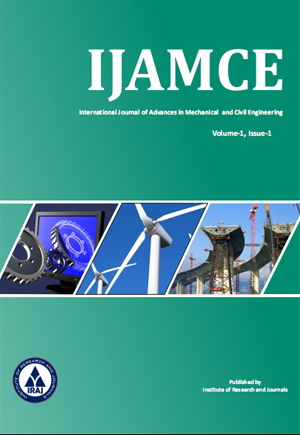Publish In |
International Journal of Advances in Mechanical and Civil Engineering (IJAMCE)-IJAMCE |
 Journal Home Volume Issue |
||||||||
Issue |
Special Issue ( Sep, 2016 ) | |||||||||
Paper Title |
Effect of Ground Granulated Blast Furnace Sag on the Geotechnical Properties of Lime Treated Lithomargic Soil | |||||||||
Author Name |
Nanda H.S, H.N.Ramesh, Phalachandra H. M. | |||||||||
Affilition |
Civil Enginnering Department , Principal Bangalore Technological Institute,Bengaluru, VTU,India Professor,Civil Enginnering Department , University Visveshvarayya college of Engineering,Bengaluru, India. Research Scholar,Civil Enginnering Department , Anjuman Institute of Tecnology & Management,Bhatkal, Karnataka,India | |||||||||
Pages |
56-59 | |||||||||
Abstract |
Lithomargic(Shedi) soil is most commonly available soil throughout west coast of India. The Lithomargic soil strata are existing at shallow depths below natural ground level and are whitish, yellowish or pinkish in colour . These are classified as silty sand or sandy silt and are considered to be very sensitive soil of low strength when it is wet or saturated. In this study experimental investigations are made to evaluate the unconfined strength including compaction characteristics of Lithomargic soil (shedi soil) stabilized with ground Granulated Blast furnace Slag(GGBS) and lime. The percentage of slag added to the shedi soil, as percentage of dry soil mass , varied from 10 to 50%. The results obtained illustrate that 30% addition of slag by weight gives optimum unconfined compressive strength after 90 days of curing. Further investigations are done by adding lime to the soil-GGBS mix (at optimum GGBS content) in the range of 1 to 6% of total mass of shedi soil for different curing periods. It was found that inclusion of lime can significantly enhance the UCS values of stabilized shedi soil. The investigation on the role of lime content with optimum GGBS in the soil for various curing periods shows that the strength ratio for the mix considered increases by 2 – 4 folds. This may be due to the formation of cementaceous hydrated calcium silicates by pozzolonic reaction between GGBS and lime which improves the strength values of shedi soil. The soil maximum dry density is found to increase, while the optimum water content decreases with increase in the GGBS content. Higher specific gravity of GGBS is found to increase the dry density at higher percentage of GGBS. Keywords- Optimum, GGBS, Shedi, Stabilisation, Unconfined, Lethomargic. | |||||||||
| View Paper | ||||||||||